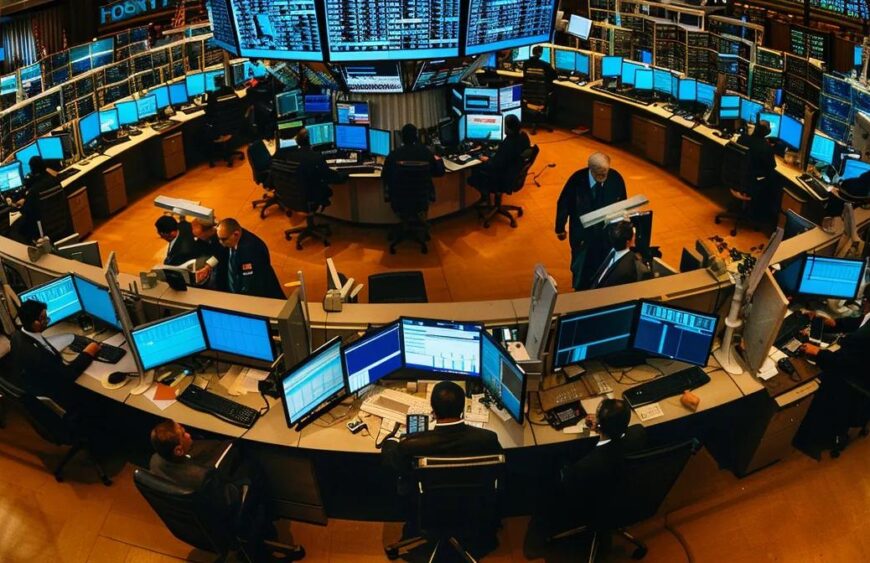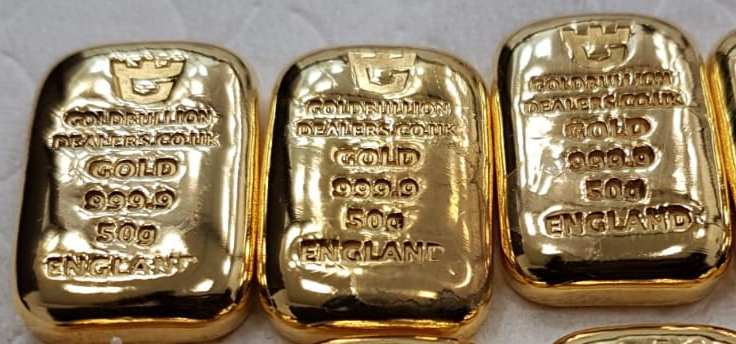Impacts of Israel’s Attacks on Iran: Oil and Gold Prices Rise
Introduction
The interplay between military actions and global commodity markets is drawing significant attention. Recent Israeli attacks on Iranian targets have stoked geopolitical tensions and triggered sharp movements in key asset prices such as oil and gold. This article examines how these military dynamics influence global markets, the immediate effects on commodity prices, and the long-term trends investors should anticipate. With an investment specialist’s perspective, it explores market liquidity, inflation concerns, and strategic asset allocations. Historical precedents, OPEC’s role, and outcomes in the oil and gold markets are discussed, offering critical insights and actionable strategies for navigating periods of geopolitical risk.
Understanding the Relationship Between Israel's Attacks and Prices
Examine How Military Actions Can Influence Global Markets
Military actions, such as the recent Israeli strikes, generally increase uncertainty in global financial markets. This uncertainty leads investors to seek safer assets, often boosting oil and gold prices. For instance, rising regional tensions may drive investors to bid up oil prices due to potential supply disruptions while simultaneously increasing gold demand as a safe-haven asset. Research indicates that even a moderate (around 10%) increase in geopolitical risk can contribute to a significant uptick in gold demand. Furthermore, these actions tend to depress equity markets while commodity prices move upward almost immediately in response to changing market sentiment.
Assess the Immediate Aftermath on Oil and Gold Valuations
Immediately following an escalation in military conflict, commodity markets react swiftly. Oil prices typically rise by 2%–5% as the market anticipates supply bottlenecks and infrastructural disruptions. In parallel, gold prices often increase by over 3% within a few trading sessions as investors shift into safe-haven assets. This dual reaction reflects oil’s sensitivity to immediate supply issues and gold’s appeal as a long-term hedge against systemic risk and currency volatility. Past cases demonstrate that heightened military activity generally corresponds with a near-synchronous increase in gold demand.
Identify Trends in Price Fluctuations During Conflicts
Historical data reveal a consistent pattern during conflicts: oil prices can surge rapidly due to supply risk premiums, while gold prices experience a steadier, more gradual climb. For instance, during earlier Middle Eastern conflicts, oil prices spiked within 48 hours of incidents—sometimes rising by as much as 10% in severe cases—while gold prices increased more slowly over several weeks. This divergence stems from oil’s immediate logistical concerns and gold’s longer-term role as a reserve asset. Additionally, during intense periods of tension, the previously weak correlation between oil and gold prices tends to narrow, reflecting the broad adjustment in investor risk preferences.
Discuss the Geopolitical Factors Affecting Commodity Prices
Several geopolitical factors contribute to commodity price volatility. Actions such as international sanctions against oil-producing nations can sharply limit exports, leading to higher oil prices. Similarly, tensions around critical transit routes increase the risk premium on oil. In parallel, central bank policies during crises may lead to currency devaluations, thereby enhancing gold’s appeal. Economic models reveal that commodity prices are heavily influenced by investor sentiment, foreign exchange fluctuations, and strategic risk allocations, and that these reactions can become non-linear once a certain threshold of geopolitical uncertainty is reached.
Evaluate Historical Precedents of Similar Incidents
Historical events provide context for current market behavior. During the Gulf War (1990–1991) and later conflicts in 2006 and 2008, oil prices surged dramatically while gold also experienced significant gains. In one example, gold prices increased nearly 8% within a month of conflict escalation. These precedents show that military provocations typically lead to higher energy prices as risk premiums are added to oil pricing and increased demand for gold serves as a hedge during periods of economic uncertainty.
Impact of Israeli Military Actions on Oil Market Dynamics
Analyse Price Surges in the Oil Market Following Military Conflicts
Military conflicts in the Middle East often result in rapid oil price surges. Investors react quickly to potential disruptions, bidding up prices as they anticipate constraints such as damaged infrastructure or blocked shipping lanes. Recent Israeli military activities have led to noticeable upticks in oil futures, with even minor escalations capable of increasing prices by 2%–5% within hours. Such movements are supported by observed logistical disruptions and rising financial concerns from increased military expenditure, underscoring the market’s sensitivity to geopolitical shocks.
Investigate OPEC's Role in Response to Geopolitical Tensions
OPEC’s involvement is crucial during times of geopolitical turmoil. In response to military conflicts, OPEC members may adjust production quotas to manage supply shortages and reduce price volatility. By either cutting production to conserve reserves or increasing output to signal stability, OPEC’s coordinated actions help temper market shocks. Recent meetings have shown an overall cautious optimism, where communication and policy adjustments play a key role in moderating investor sentiment amid uncertainty.
Review Expert Predictions on Long-Term Oil Price Trends
Market experts generally predict an upward trend in oil prices under sustained geopolitical instability. The immediate price surges from military actions may set the stage for longer-term supply shortages if conflicts persist in oil-rich regions. Though speculative bubbles can occasionally form, the prevailing view is that continued geopolitical risk will keep risk premiums elevated in oil markets. Structural shifts, including investments in renewable energy and supply diversification over time, may gradually alleviate some of the pressure, but near-term volatility is expected to remain a defining feature.
Examine the Influence of Sanctions on Iranian Oil Exports
Sanctions imposed on Iran significantly disrupt global oil supplies. Following military confrontations or aggressive diplomacy, stricter sanctions can reduce Iran’s oil exports, leading to immediate upward pressure on international oil prices. Historical instances show that such sanctions have driven prices up by 5%–7% in a short span. Additionally, disruptions in established trade channels increase market unpredictability, further encouraging other producers to raise output—often at higher costs—which reinforces higher price levels over the medium term.
Explore Alternative Oil Sources During Middle Eastern Tensions
In response to the risks inherent in the Middle East, many nations are diversifying their oil supply sources. Alternative suppliers from regions such as West Africa, Latin America, and Central Asia offer a strategy to mitigate overreliance on politically unstable areas. Although these sources might not immediately replace lost volumes from major players like Iran, their increasing role in the global market can help moderate volatility. Technological advancements in extraction and exploration are also making these alternative sources more competitive, providing a buffer against abrupt supply shocks during conflicts.
The Rising Value of Gold Amidst Geopolitical Tensions
Understand Why Investors Flock to Gold During Crises
Gold is traditionally viewed as a safe-haven asset, and during periods of geopolitical uncertainty it attracts increased demand. When military conflicts escalate, investors seek gold to protect against inflation and currency devaluation. Empirical research from past conflicts reveals that gold prices can rise by 4%–6% over a few weeks, reflecting its critical role as a hedge when market conditions are volatile. This behavior is reinforced by central banks that diversify their reserves into gold during times of economic stress.
Evaluate the Historical Performance of Gold During Conflicts
A review of historical gold performance demonstrates its resilience during military conflicts. Despite setbacks in other asset classes, gold has maintained or even increased its purchasing power during crises. Data from previous conflicts indicate that gold prices often appreciate by double digits during extended periods of uncertainty. This performance is driven by a combination of increased investor demand for stability and tactical shifts by central banks, which view gold as a reliable store of value when other investments falter.
Discuss Variations in Gold Prices Linked to Middle East Instability
Gold’s reaction to Middle Eastern conflicts is not uniform; its price movements depend on the scale and duration of the instability. Major military confrontations that threaten global trade or regional financial stability tend to push gold prices higher, while more limited skirmishes trigger milder responses. Analysts monitor geopolitical risk indices, market sentiment, and currency fluctuations as key indicators to forecast these variations, underscoring the importance of a nuanced approach when investing in gold.
Investigate the Role of Gold as a Hedge Against Inflation
Gold’s status as an inflation hedge becomes especially important during periods of economic uncertainty. As governments increase spending to finance military operations, the resulting inflation erodes fiat currency value, prompting investors to turn to gold. Historical observations consistently show that when inflation rises, gold not only preserves purchasing power but can also deliver capital gains. This dual function makes gold an attractive component of diversified investment strategies during volatile economic periods.
Assess the Impact of Currency Fluctuations on Gold Investments
Currency devaluations during geopolitical conflicts tend to boost the value of gold. With gold priced globally in US dollars, a weakening domestic currency makes gold even more appealing as a store of wealth. Past episodes of significant currency devaluation have often been accompanied by strong gold returns, underscoring its role as both a hedge against currency risk and a profitable investment during periods of economic instability.
Forecasting Future Trends for Oil and Gold Prices
Identify Key Indicators for Predicting Commodity Price Shifts
Forecasting oil and gold prices involves monitoring several key indicators, including inventory levels, production quotas, geopolitical developments, and fiscal policy changes. Technical models that use moving averages and momentum indicators also provide insights into potential market corrections. A sustained rise in geopolitical risk, for example, is often a precursor to increased commodity prices, making these indicators vital for building robust forecasting models.
Review Expert Analyses on Potential Future Conflicts
Experts agree that future conflicts, particularly in the volatile Middle East, will continue to influence both oil and gold markets. Ongoing regional disputes and potential extensions of sanctions regimes are seen as primary drivers of long-term oil price volatility, while persistent uncertainty will keep gold in favor as a safe-haven asset. These analyses emphasize the need for investors to remain agile and diversified in their portfolios.
Explore Economic Data That Influences Oil and Gold Valuations
Economic indicators such as inflation, currency exchange rates, and industrial production significantly affect commodity valuations. Oil prices are highly sensitive to changes in global demand, while gold benefits from lower interest rates and expansive fiscal policies that depreciate fiat currencies. By integrating these economic signals with geopolitical developments, investors can gain a clearer picture of future price trajectories.
Discuss Potential Global Responses to Escalating Tensions
Global responses to rising geopolitical tensions usually involve a mix of defensive measures and strategic adjustments. Governments may release strategic reserves or engage diplomatically to stabilize markets, while central banks might tweak interest rate policies or adopt quantitative easing measures. These coordinated responses help to mitigate immediate price shocks and set the stage for longer-term market adjustments.
Examine Technology Advancements in Energy and Commodities
Technological innovations are reshaping the energy and commodities sectors. In oil markets, advancements in extraction techniques and renewable energy integration are reducing dependency on traditional supplies. Meanwhile, blockchain and digital asset platforms are transforming gold trading and verification, enhancing transparency and investor confidence. These technological shifts promise to further influence long-term trends by creating more data-driven and interconnected markets.
Global Economic Consequences of Increased Oil and Gold Prices
Investigate Inflationary Pressures Resulting From Rising Prices
Rising commodity prices directly contribute to global inflation. Increased oil prices raise transportation and production costs, which often lead to higher consumer prices. At the same time, surging gold prices reflect growing inflationary expectations, prompting central banks to tighten monetary policy. Historical trends show that significant oil price spikes are closely linked with modest but sustained increases in consumer prices, making commodity trends important indicators for future inflation risks.
Assess the Impact on Consumer Spending and Behaviour
Higher oil and gold prices can substantially affect consumer spending. Increased fuel costs reduce disposable income, shifting consumer behavior and spending patterns. Similarly, rising gold prices can lead to higher costs in industries that use precious metals, such as jewellery and electronics. These changes often result in a reevaluation of budgets and can dampen overall economic growth, highlighting the interconnectedness of commodity prices and consumer confidence.
Discuss How Prices Affect Emerging Market Economies
Emerging markets, with their heavy reliance on energy imports, are particularly vulnerable to rising oil prices. Sharp price increases can lead to balance of payments deficits and currency devaluation. While higher gold prices might benefit countries with significant gold mining sectors, the net effect is usually negative for nations dependent on stable and affordable energy. Policymakers in these economies must closely monitor commodity trends to implement strategies that balance economic growth with stability.
Evaluate Responses From Central Banks to Price Surges
Central banks often respond to spikes in commodity prices by adjusting monetary policies. Measures such as raising interest rates or implementing quantitative easing are common responses aimed at maintaining financial stability and curbing inflation. Historical instances, such as the oil shocks of the 1970s, demonstrate how these policy adjustments can have long-lasting impacts on national and global economies.
Review Trade Implications in Times of High Commodity Costs
High oil and gold prices affect international trade by increasing transportation and production costs. This can lead to reduced trade volumes and shifts in global supply chains. Countries that export commodities may benefit from trade surpluses, while import-dependent nations might suffer balance of payment challenges. Policymakers must consider these trade implications when crafting economic strategies to manage both domestic and international market pressures.
Strategic Investment Approaches During Uncertain Times
Explore Safe-Haven Assets Outside of Oil and Gold
In times of geopolitical turbulence, investors often seek additional safe-haven assets beyond oil and gold. Government bonds, high-quality equities, and even cryptocurrencies can provide diversification and reduce portfolio risk. These alternative assets typically offer lower volatility and stable returns, serving as a buffer against sudden market shifts.
Identify Diversification Strategies for Reducing Risk
Diversification remains a fundamental strategy in turbulent times. By spreading investments across various asset classes—including equities, fixed income, real estate, and commodities—investors can mitigate risks associated with any single market. Historical data shows that diversified portfolios tend to experience smoother returns, even when individual sectors face sharp declines. A balanced approach can capture gains from emerging trends while reducing overall exposure to market volatility.
Assess the Benefits of Investing in Energy Stocks
Energy stocks provide an indirect way to benefit from rising oil prices without direct exposure to commodities. Companies involved in exploration, production, and refining often deliver leveraged returns during periods of rising oil prices. They also tend to pay attractive dividends, making them appealing to income-focused investors. However, thorough analysis of company fundamentals and geopolitical exposure remains crucial.
Discuss the Role of Government Bonds in Volatile Markets
Government bonds offer stability during periods of market turbulence. Their low-risk nature and reliable income streams make them a cornerstone of defensive investment strategies. When commodity prices surge and inflation pressures mount, central banks often adjust policies in ways that further enhance the appeal of bonds. As a result, bonds play a critical role in maintaining portfolio balance during uncertain times.
Review Financial Tools to Hedge Against Price Fluctuations
Investors can use financial instruments like futures, options, and ETFs to hedge against commodity price volatility. Futures contracts allow locking in current prices, while options provide flexibility without outright commitment to buy or sell. ETFs offer broad market exposure without the need to hold physical commodities, collectively providing a strategic means to safeguard investments against abrupt market movements.
Frequently Asked Questions
Q: How do recent Israeli attacks influence oil prices? A: The recent attacks have raised concerns over supply disruptions in key oil-producing regions, prompting investors to bid up oil futures. Typically, prices increase by 2%–5% rapidly as the market anticipates shortages.
Q: What makes gold a safe-haven asset during conflicts? A: Gold’s intrinsic value remains stable even during times of economic uncertainty. Historical data shows that during crises, gold prices often surge by 4%–6% as investors seek protection from inflation and currency devaluation.
Q: Are alternative energy investments a viable hedge against volatile oil prices? A: Yes, investments in energy stocks and renewable projects provide diversification and can mitigate the risks associated with traditional oil market volatility, benefiting from shifts in energy policy and technological advancements.
Q: How can investors reduce risk during periods of geopolitical uncertainty? A: Diversifying portfolios across a range of asset classes—including equities, bonds, and commodities—and employing hedging strategies such as futures and options can reduce overall risk.
Q: What role do government bonds play when commodity prices surge? A: Government bonds offer low-risk income and help stabilize portfolios during periods of high commodity prices. Central bank policies in response to inflation make bonds even more attractive for balancing market volatility.
Final Thoughts
Military actions and geopolitical uncertainty have a profound impact on commodity prices, notably oil and gold. As these events continue to influence global markets, investors must stay vigilant by monitoring economic indicators, diversifying portfolios, and utilizing hedging tools. Although immediate price surges often set the stage for longer-term trends, strategic and flexible investment approaches are essential to safeguard wealth and ensure portfolio resilience in an ever-changing market landscape.





